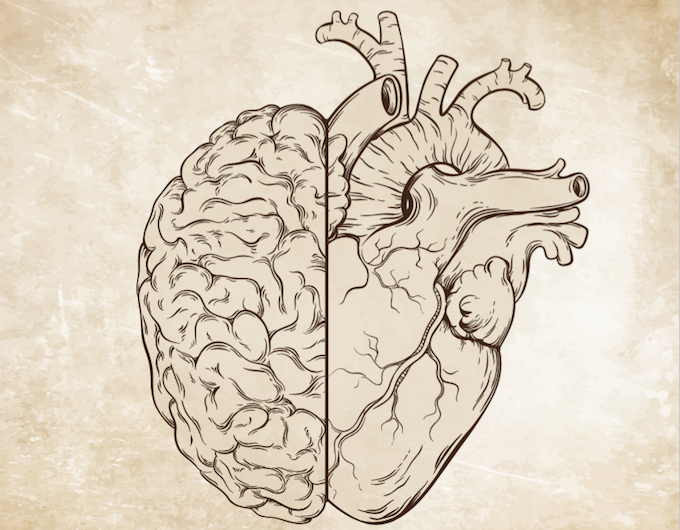
I’ve watched a lot of bad movies. I guess I see it as part of my role as a husband. Increasingly it appears to be part of my role as a father. It makes you wonder how much of your life you’ve wasted watching the incredible exploits of animated superheroes or the remarkable relationships developed in the twentieth century’s greatest invention, the rom-com.
Having thought about this (probably a bit too much) it is easy to underestimate the intellectual impact of the rom-com. The socially acceptable response is to describe the rom-com genre as a ridiculous combination of unlikely circumstances and unfathomable emotional arcs, especially those featuring people like Meg Ryan, Tom Hanks, Hugh Grant and Sandra Bullock.
However, it turns out that your time is not actually wasted watching these movies. There are lessons to learn, insights that can translate to real life and to what we all do every day – marketing. No movie demonstrates this more perfectly than Jerry Maguire, the 1996 American romantic-comedy-drama-sports-business film. This piece of cinematic glory stars Tom Cruise but it is Cuba Gooding Jr and Rene?e Zellweger that really set up the insight.
Two quotes. Two very different emotional angles.
“You complete me”. Tom Cruise states his feelings for Zellweger, showing depth and authenticity that was never expected of his character nor his acting ability.
“Show me the money”. Cuba Gooding Jr demonstrates a more material but equally relevant human driver.
These two quotes and the contrast between them can’t help but get you thinking. It doesn’t take long to see some direct parallels between the sentiment of these statements and how people think about the customer experience space. As in Jerry Maguire, both are important. The movie wouldn’t work without the intimacy of “you complete me” or the overtness of “show me the money”.
The same applies in customer experience terms. There has to be genuine and authentic care for the customer, that means caring for them in human terms as a real person, not a customer reference number. At the same time, this space is not fluffy, it is not just about creating happiness for happiness’ sake. There is a very real “show me the money” angle on customer experience, an angle that makes senior parts of the businesses we deal with sit forward and watch closely.
Work we’ve done across the travel, energy, telecommunications and retail sectors has proven this model time and time again. The happier your customers, the longer they stay and the more they spend. The outcome is really that simple. And while it is simple, the commercial outcomes this approach points to – churn reduction, revenue growth, investment prioritisation – are the conversations that a CEO or perhaps more importantly, a CFO wants to have around customer experience.
Our knowledge working in this space has seen TRA develop and prove a strategic framework for thinking about this dynamic:
1. The interactions a customer has with a brand creates emotion.
Positively, this might be the warmth of an emotionally led communications piece, the satisfaction of resolving a call centre issue in a painless way, the reward of being recognised as an individual.
Negatively, this might be the frustration of a billing problem or the resentment of a seemingly endless and time-consuming series of calls to address an issue.
2. That emotion creates memories.
These emotions accrue like entries on a balance sheet. Debits and credits, of differing scale all building to form a picture of overall health, the disposition the customer has to the brand. And memories create neural networks that become hard wired short cuts to emotions.
3. These emotionally led memories drive decisions.
Then the rubber hits the road. A decision point pops up and the hard-wired neural network switches on. In a retail context, this might be relatively frequently – it’s time for the weekly supermarket shop or the car needs to be filled up. In a service context, this will be less frequent but even more important – who to choose for the flight to Fiji, which options to consider when getting a mortgage.
The emotionally created memories now determine which options you look at online, and which makes you feel like it is best suited ‘to your needs’. It is emotion that drives these choices. Our brain simply post-rationalises that we’ve considered all the practical details – the performance benefits of a certain type of petrol, the relative speed of broadband from different providers.
To dip back into pop-culture and to show my age, U2’s Bono (there was a time where he didn’t need a contextual introduction) sums this up very cleanly: “Our hearts make our choices and our brains are doing their best to try to catch up”.
So, how do we show you the money?
Proving this is the key challenge. Without getting too methodological, there is a clear and robust way we attack this. Like much of our thinking in this space and reflecting international best practice, the solution here is about integrating different data sets to provide a total view of the customer.
To prove the commercial value of the customer experience, we need to understand two things
How someone feels about an experience at a point in time.
How their behaviour changes in the coming months.
We then draw from the approach commonly used in data-driven marketing contexts – A-B testing: examine the behaviour of an exposed group and contrast it against a control group. Simple when expressed in these terms but hours of analysis time (think multiple computer screens with mind bogglingly complex data images) are required to turn all this data into a robust commercial case. And the numbers add up – good emotional experiences result in behaviour that drops straight to the bottom line.
Having addressed Cuba Gooding Jnr and the requirement to “show me the money”, the next big question is then how do we make customers happier. Here we have to think in more Rene?e Zellweger terms. Telling customers “you complete me” may be a step too far but there are some important considerations in how we create emotion and memories.
We have to shift from talking about customer-centricity to being customer-centric. Many companies are talking this talk but few are walking the walk. This needs a willingness on the part of the company to take a holistic view of their relationship with customers – to understand that for customers all of their experiences of the brand accumulate to form their total experience.
We also have to think about our customer experience in ease and reward terms. Ease because our brains are greedy consumers of energy so it is a basic human strategy to minimise effort; and reward because people adopt behaviours that compensate them, especially in emotional terms, for their effort.
So what does all of this tell us? Is customer experience about Rene?e Zellweger or Cuba Gooding Jnr?
Yes, authenticity and genuinely caring about making our customers happy is important. But we have to be clear about why we’re doing it. The core driver is a simple truth – the happier you make customers, the longer they stay and the more they spend. All of our work in this space points to a shift in thinking. The customer experience is not a cost to manage, it is a growth driver. Churn reduction and revenue growth are enabled by creating positive emotions and memories through the interactions we have with our customers. These are the conversations we want to have with CFOs, who by their very nature are much more Cuba Gooding Jnr than Rene?e Zellweger.





